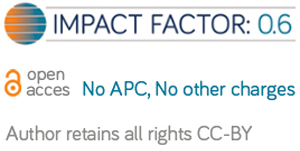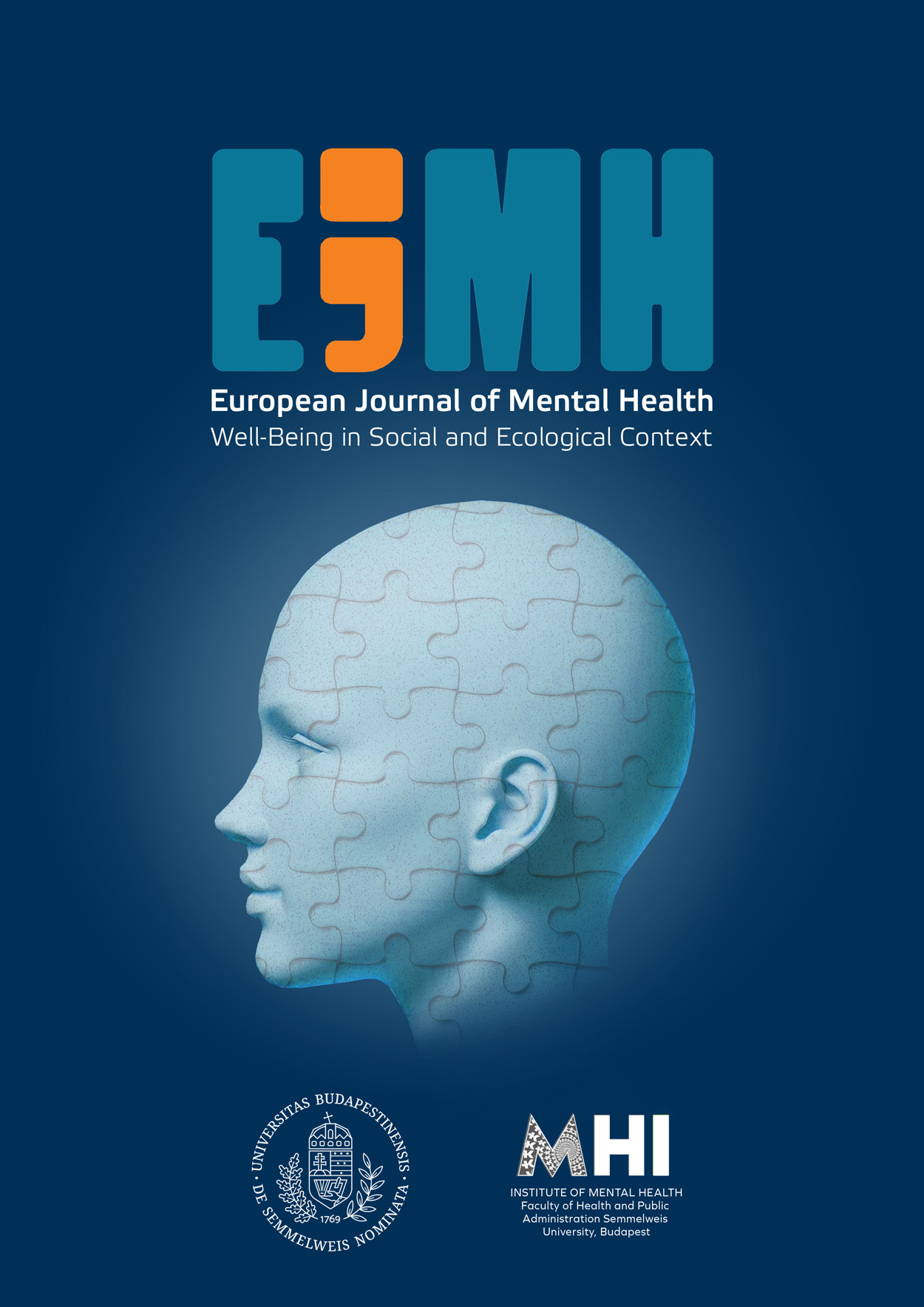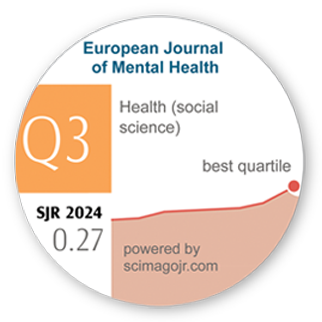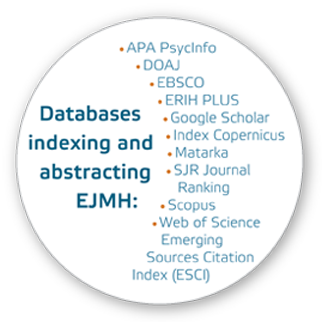Early Maladaptive Schemas’ Associations with Big-Five Personality Traits in Two Non-Clinical Adult Samples from Different Cultural Backgrounds
DOI:
https://doi.org/10.5708/EJMH.19.2024.0015Keywords:
personality traits, Big Five, early maladaptive schemas, nonclinical samples, well-beingAbstract
Introduction: While personality traits and early maladaptive schemas (EMSs) can affect an individual’s behavior and well-being, the links between these constructs are under-researched, especially in non-clinical samples.
Aims: Two studies were conducted to address these links, intending to explore their specifics, as previous research evidenced various associations’ models.
Methods: In Study 1, the sample consisted of 120 respondents (65.0% females) living in the UK and the USA. In Study 2, the sample consisted of 244 respondents (68.0% females) living in Lithuania. In both studies, most of the respondents were aged 18-25. The survey was administered online. Studies 1 and 2 applied the Big Five Inventory and Young Schema Questionnaire.
Results: In Study 1, neuroticism was significantly positively associated with 17 EMSs. Extraversion stood significantly negatively related to 12 EMSs, conscientiousness was significantly negatively related to 15 EMSs, openmindedness stood significantly negatively related to 2 EMSs, but significantly positively related to admiration, and agreeableness appeared significantly negatively related to 9 EMSs. In Study 2, neuroticism was significantly positively associated with 16 EMSs. Extraversion stood significantly negatively related to 9 EMSs, conscientiousness was significantly negatively related to 12 EMSs, open-mindedness and agreeableness were significantly negatively related to 10 EMSs.
Conclusions: Study 2 partly failed to replicate the results of Study 1, which implies that the model of links between EMSs and personality traits could be impacted by cultural factors, and needs further investigation.
References
Bahramizadeh, H., & Ehsan, H. B. (2011). The evaluation of prediction potential neuroticism and extraversion according to early maladaptive schemas. Procedia – Social and Behavioural Science, 30, 524–529.
https://doi.org/10.1016/j.sbspro.2011.10.102
Barańczuk, U. (2019). The five factor model of personality and social support: A meta-analysis. Journal of Research in Personality, 81, 38–46.
https://doi.org/10.1016/j.jrp.2019.05.002
Bilge, Y., & Balaban, G. (2021). The relationships between personality disorders and early maladaptive schemas and the moderating role of gender. Alpha Psychiatry, 22(1), 12–18.
https://doi.org/10.5455/apd.114935
Calvete, E., Orue, I., & González-Diez, Z. (2013). An examination of the structure and stability of early maladaptive schemas by means of the Young Schema Questionnaire-3. European Journal of Psychological Assessment, 29(4), 283–290.
https://doi.org/10.1027/1015-5759/a000158
Caspi, A., Roberts, B. W., & Shiner, R. L. (2005). Personality development: Stability and change. Annual Review of Psychology, 56(1), 453–484.
https://doi.org/10.1146/annurev.psych.55.090902.141913
Costa, P. T., & McCrae, R. R. (1990). Personality disorders and the five-factor model of personality. Journal of Personality Disorders, 4(4), 362–371.
https://doi.org/10.1521/pedi.1990.4.4.362
Diener, E., Wirtz, D., Tov, W., Kim-Prieto, C., Choi, D.-w., Oishi, S., & Biswas-Diener, R. (2010). Flourishing Scale (FS) [Database record]. APA PsycTests.
https://doi.org/10.1037/t03126-000
Ehsan, H. B., & Bahramizadeh, H. (2011). Early maladaptive schemas and agreeableness in personality five factor model. Procedia – Social and Behavioral Sciences, 30, 547–551.
https://doi.org/10.1016/j.sbspro.2011.10.107
Esmaeilian, N., Dehghani, M., Koster, E. H. W., & Hoorelbeke, K. (2019). Early maladaptive schemas and borderline personality disorder features in a non-clinical sample: A network analysis. Clinical Psychology & Psychotherapy, 26(3), 388–398.
https://doi.org/10.1002/cpp.2360
Etemadnia, M., Shiroodi, S., Khalatbari, J., & Abolghasemi, S. (2021). Predicting love trauma syndrome in college students based on personality traits, early maladaptive schemas, and spiritual health. Iranian Journal of Psychiatry and Clinical Psychology, 27(3), 318–335.
https://doi.org/10.32598/ijpcp.27.2.1096.2
Frías, A., Navarro, S., Palma, C., Farriols, N., Aliaga, F., Salvador, A., Aluco, E. Martínez, B., & Solves, L. (2018). Early maladaptive schemas associated with dimensional and categorical psychopathology in patients with borderline personality disorder. Clinical Psychology & Psychotherapy, 25(1), e30–e41.
https://doi.org/10.1002/cpp.2123
Güler, K., & Özgörüş, Z. (2022). Investigation of the relationship between early maladaptive schemas, temperament and eating attitude in adults. Journal of Eating Disorders, 10, Article 187.
https://doi.org/10.1186/s40337-022-00711-w
George, D., & Mallery, M. (2010). SPSS for Windows Step by Step: A Simple Guide and Reference, 17.0 Update. (10th Edition). Pearson.
Goldberg, L. R. (1990). An alternative "description of personality": The big-five factor structure. Journal of Personality and Social Psychology, 59(6), 1216–1229.
https://doi.org/10.1037/0022-3514.59.6.1216
Graziano, W. G., Habashi, M. M., Sheese, B. E., & Tobin, R. M. (2007). Agreeableness, empathy, and helping: A person × situation perspective. Journal of Personality and Social Psychology, 93(4), 583–599.
https://doi.org/10.1037/0022-3514.93.4.583
Headey, B., Muffles, R., & Wagner, G. G. (2010). Long-running German panel survey shows that personal and economic choices, not just genes, matter for happiness. Proceedings of the National Academy of Sciences, 107(42), 17922–17926.
https://doi.org/10.1073/pnas.1008612107
Jain, A., & Singh, K. (2022). Development and validation of the Adaptive Schema Questionnaire. Indian Journal of Psychological Medicine, 45(5), 476–485.
https://doi.org/10.1177/02537176221105146
Koppers, D., Van, H., Peen, J., & Dekker, J. J. M. (2021). Psychological symptoms, early maladaptive schemas and schema modes: predictors of the outcome of group schema therapy in patients with personality disorders. Psychotherapy Research, 31(7), 831–842.
https://doi.org/10.1080/10503307.2020.1852482
Lungu, V., & Stomff, M. (2017). The early maladaptive cognitive schemas and personality traits in emerging adulthood. LUMEN Proceedings, 1, 424–437.
https://doi.org/10.18662/lumproc.rsacvp2017.39
Mącik, D., Łysiak, M., & Mącik, R. (2019). Mediating role of neuroticism between early maladaptive schemas and negative emotionality. Current Issues in Personality Psychology, 7(3), 220–231.
https://doi.org/10.5114/cipp.2019.88583
McCrae, R., & Costa P. T. (1987). Validation of the five-factor model of personality across instruments and observers. Journal of Personality and Social Psychology, 52(1), 81–90.
https://doi.org/10.1037/0022-3514.52.1.81
Pauwels, E., Dierckx, E., Schoevaerts, K., & Claes, L. (2016). Early maladaptive schemas in eating disordered patients with or without non-suicidal self-injury. European Eating Disorders Review, 24(5), 399–405.
https://doi.org/10.1002/erv.2460
Phillips, K., Brockman, R., Bailey, P. E., & Kneebone, I. I. (2017). Young Schema Questionnaire – Short Form Version 3 (YSQ-S3): Preliminary validation in older adults. Aging & Mental Health, 23(1), 140–147.
https://doi.org/10.1080/13607863.2017.1396579
Rahnemazade, M., & Khanmohammadiotaghsara, A. (2015). The relation of early maladaptive schemas with five-factor personality traits and their difference amongst first, middle and last-born children. A case study of Amol city-Iran. Indian Journal of Fundamental and Applied Life Sciences, 5(S1), 2019–2026.
www.cibtech.org/sp.ed/jls/2015/01/jls.htm
Sava, F. A. (2009). Maladaptive schemas, irrational beliefs, and their relationship with the five-factor personality model. Journal of Cognitive and Behavioral Psychotherapies, 9(2), 135–147.
Schretlen, D. J., van der Hulst, E.-J., Pearlson, G. D., & Gordon, B. (2010). A neuropsychological study of personality: Trait openness in relation to intelligence, fluency, and executive functioning. Journal of Clinical and Experimental Neuropsychology, 32(10), 1068–1073.
https://doi.org/10.1080/13803391003689770
Shojaati, A. Kalantari, M., & Mulavi, H. (2019). Do emotional abuse and personality traits predict early maladaptive schemas and social anxiety. Early Child Development and Care, 191(3), 389–402.
https://doi.org/10.1080/03004430.2019.1621860
Shorey, R. C, Stuart, G. L., & Anderson, S. (2014). Differences in early maladaptive schemas between a sample of young adult female substance abusers and a non-clinical comparison group. Clinical Psychology & Psychotherapy, 21(1), 21–28.
https://doi.org/10.1002/cpp.1803
Soto, C. J., & John , O. P. (2017a). The next Big Five Inventory (BFI-2): Developing and assessing a hierarchical model with 15 facets to enhance bandwidth, fidelity, and predictive power. Journal of Personality and Social Psychology, 113(1), 117–143.
https://doi.org/10.1037/pspp0000096
Soto, C. J., & John, O. P. (2017b). Short and extra-short forms of the Big Five Inventory–2: The BFI-2-S and BFI-2-XS. Journal of Research in Personality, 68, 69–81.
https://doi.org/10.1016/j.jrp.2017.02.004
Stavropoulos, A., Haire, M., Brockman, R., & Meade, T. (2020). A schema mode model of repetitive negative thinking. Clinical Psychologist, 24(2), 99–113.
https://doi.org/10.1111/cp.12205
Steel, P., Schmidt, J., Bosco, F., & Uggerslev, K. (2018). The effects of personality on job satisfaction and life satisfaction: A meta-analytic investigation accounting for bandwidth–fidelity and commensurability. Human Relations, 72(2), 217–247.
https:/doi.org/10.1177/0018726718771465
Stieger, M., Wepfer, S., Rüegger, D., Kowatsch, T., Roberts, B. W., & Allemand, M. (2020). Becoming more conscientious or more open to experience? Effects of a two–week smartphone–based intervention for personality change. European Journal of Personality, 34(3), 345–366.
https://doi.org/10.1002/per.2267
Thimm, J. C. (2010). Relationships between early maladaptive schemas and psychosocial developmental task resolution. Clinical Psychology & Psychotherapy, 17(3), 219–230.
https://doi.org/10.1002/cpp.647
Thimm, J. C. (2011). Incremental validity of maladaptive schemas over five-factor model facets in the prediction of personality disorder symptoms. Personality and Individual Differences, 50(6), 777–782.
https://doi.org/10.1016/j.paid.2010.12.030
Tong, K. K., & Wang, Y. Y. (2017). Validation of the flourishing scale and scale of positive and negative experience in a Chinese community sample. PLOS ONE, 12(8), Article e0181616.
https://doi.org/10.1371/journal.pone.0181616
Wilt, J. A, & Revelle, W. (2009). Extraversion. In M. R. Leary & R. H. Hoyle (Eds.). Handbook of individual differences in social behavior, pp. 27–45. Guilford Press.
Yığman, F., Aksu, M. H., Nazlı, Ş. B., & Duman, A. (2021). Psychological determinants of entertainment preferences: From the perspective of schema theory. Psychiatry and Clinical Psychopharmacology, 31(4), 417–424. https://doi.org/10.5152/pcp.2021.21132
Young, J. E. (1999). Cognitive therapy for personality disorders: A schema-focused approach (3rd ed.). Professional Resource Exchange.
Young, J. E., & Brown, G. (2005). Young Schema Questionnaire-Short Form; Version 3 (YSQ-S3, YSQ) [Database record]. APA PsycTests.
https://doi.org/10.1037/t67023-000
Young, J. E. (2014). Early maladaptive schemas. Schema Therapy Institute.
Young, J. E., Klosko, J. S., & Weishaar, M. E. (2003). Schema Therapy: A Practitioner's Guide. Guilford Press.
Zeighami, R., Hosseini, S. M., Mohammadi, N., & Shahsavari, S. (2021). Predicting addiction susceptibility based on big five personality traits. Iranian Journal of Psychiatry and Behavioral Sciences, 15(4), Article e10903.
https://doi.org/10.5812/ijpbs.109103






